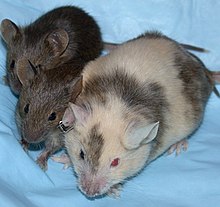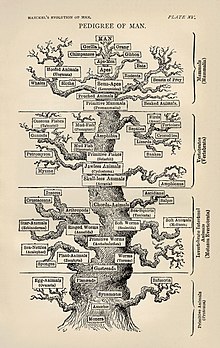A genetically modified organism (GMO) is any organism whose genetic material has been altered using genetic engineering techniques (i.e., a genetically engineered organism). GMOs are used to produce many medications and genetically modified foods and are widely used in scientific research and the production of other goods. The term GMO is very close to the technical legal term, 'living modified organism', defined in the Cartagena Protocol on Biosafety, which regulates international trade in living GMOs (specifically, "any living organism that possesses a novel combination of genetic material obtained through the use of modern biotechnology").
A more specifically defined type of GMO is a "transgenic organism." This is an organism whose genetic makeup has been altered by the addition of genetic material from an unrelated organism. This should not be confused with the more general way in which "GMO" is used to classify genetically altered organisms, as typically GMOs are organisms whose genetic makeup has been altered without the addition of genetic material from an unrelated organism.
The first genetically modified mouse was created in 1974, and the first plant was produced in 1983.[1]
Production
Genetic modification involves the mutation, insertion, or deletion of genes. Inserted genes usually come from a different species in a form of horizontal gene-transfer. In nature this can occur when exogenous DNA penetrates the cell membrane for any reason. This can be accomplished artificially by:
- attaching the genes to a virus.
- physically inserting the extra DNA into the nucleus of the intended host with a very small syringe.
- using electroporation (that is, introducing DNA from one organism into the cell of another by use of an electric pulse).
- firing small particles from a gene gun.[2][3][4]
History

Herbert Boyer (pictured) and Stanley Cohen created the first genetically modified organism in 1973
Humans have domesticated plants and animals since around 12,000 BCE, using selective breeding or artificial selection (as contrasted with natural selection).[7]:25 The process of selective breeding, in which organisms with desired traits (and thus with the desired genes) are used to breed the next generation and organisms lacking the trait are not bred, is a precursor to the modern concept of genetic modification.[8]:1[9]:1 Various advancements in genetics allowed humans to directly alter the DNA and therefore genes of organisms. In 1972 Paul Berg created the first recombinant DNA molecule when he combined DNA from a monkey virus with that of the lambda virus.[10][11]
Herbert Boyer and Stanley Cohen made the first genetically modified organism (GMO) in 1973. They took a gene from a bacterium that provided resistance to the antibiotic kanamycin, inserted it into a plasmid and then induced another bacteria to uptake the plasmid. The bacteria was then able to survive in the presence of kanamycin.[12] Boyer and Cohen expressed other genes in bacteria. This included genes from the toad Xenopus laevis in 1974, creating the first GMO expressing a gene from an organism from different kingdom.[13]
In 1974 Rudolf Jaenisch created the first GM animal.
In 1974 Rudolf Jaenisch created a transgenic mouse by introducing foreign DNA into its embryo, making it the world’s first transgenic animal.[14][15] However it took another eight years before transgenic mice were developed that passed the transgene to their offspring.[16][17] Genetically modified mice were created in 1984 that carried cloned oncogenes, predisposing them to developing cancer.[18] Mice with genes knocked out (knockout mouse) were created in 1989. The first transgenic livestock were produced in 1985[19] and the first animal to synthesise transgenic proteins in their milk were mice,[20] engineered to produce human tissue plasminogen activator in 1987.[21]
In 1983 the first genetically engineered plant was developed by Michael W. Bevan, Richard B. Flavell and Mary-Dell Chilton. They infected tobacco with Agrobacterium transformed with an antibiotic resistance gene and through tissue culture techniques were able to grow a new plant containing the resistance gene.[22] The gene gun was invented in 1987, allowing transformation of plants not susceptible to Agrobacterium infection.[23] In 2000, Vitamin A-enriched golden rice, was the first plant developed with increased nutrient value.[24]
In 1976 Genentech, the first genetic engineering company was founded by Herbert Boyer and Robert Swanson; a year later, the company produced a human protein (somatostatin) in E.coli. Genentech announced the production of genetically engineered human insulin in 1978.[25] The insulin produced by bacteria, branded humulin, was approved for release by the Food and Drug Administration in 1982.[26] In 1988 the first human antibodies were produced in plants.[27] In 1987, the ice-minus strain of Pseudomonas syringae became the first genetically modified organism to be released into the environment[28] when a strawberry field and a potato field in California were sprayed with it.[29]
The first genetically modified crop, an antibiotic-resistant tobacco plant, was produced in 1982.[30] China was the first country to commercialize transgenic plants, introducing a virus-resistant tobacco in 1992.[31] In 1994 Calgene attained approval to commercially release the Flavr Savr tomato, the first genetically modified food.[32] Also in 1994, the European Union approved tobacco engineered to be resistant to the herbicide bromoxynil, making it the first genetically engineered crop commercialized in Europe.[33] An insect resistant Potato was approved for release in the US in 1995,[34] and by 1996 approval had been granted to commercially grow 8 transgenic crops and one flower crop (carnation) in 6 countries plus the EU.[35]
In 2010, scientists at the J. Craig Venter Institute, announced that they had created the first synthetic bacterial genome. They named it Synthia and it was the world's first synthetic life form.[36][37]
The first genetically modified animal to be commercialised was the GloFish, a Zebra fish with a fluorescent gene added that allows it to glow in the dark under ultraviolet light.[38] The first genetically modified animal to be approved for food use was AquAdvantage salmon in 2015.[39] The salmon were transformed with a growth hormone-regulating gene from a Pacific Chinook salmon and a promoter from an ocean pout enabling it to grow year-round instead of only during spring and summer.[40]
Uses
GMOs are used in biological and medical research, production of pharmaceutical drugs,[41] experimental medicine (e.g. gene therapy and vaccines against the Ebola virus[42]), and agriculture (e.g. golden rice, resistance to herbicides), with developing uses in conservation.[43] The term "genetically modified organism" does not always imply, but can include, targeted insertions of genes from one species into another. For example, a gene from a jellyfish, encoding a fluorescent protein called GFP, or green fluorescent protein, can be physically linked and thus co-expressed with mammalian genes to identify the location of the protein encoded by the GFP-tagged gene in the mammalian cell. Such methods are useful tools for biologists in many areas of research, including those who study the mechanisms of human and other diseases or fundamental biological processes in eukaryotic or prokaryotic cells.Microbes
Bacteria
Bacteria were the first organisms to be modified in the laboratory, due to the relative ease of modifying their genetics.[44]They continue to be important model organisms for experiments in genetic engineering. In the field of synthetic biology, they have been used to test various synthetic approaches, from synthesizing genomes to creating novel nucleotides.[45][46][47]
These organisms are now used for several purposes, and are particularly important in producing large amounts of pure human proteins for use in medicine.[48]
Genetically modified bacteria are used to produce the protein insulin to treat diabetes.[49] Similar bacteria have been used to produce biofuels,[50] clotting factors to treat haemophilia,[51] and human growth hormone to treat various forms of dwarfism.[52][53]
Virus
In 2017 researchers genetically modified a virus to express spinach defensin proteins. The virus was injected into orange trees to combat citrus greening disease that had reduced orange production 70% since 2005.[54]Other
In addition, various genetically engineered micro-organisms are routinely used as sources of enzymes for the manufacture of a variety of processed foods. These include alpha-amylase from bacteria, which converts starch to simple sugars, chymosin from bacteria or fungi, which clots milk protein for cheese making, and pectinesterase from fungi, which improves fruit juice clarity.[55]Plants
Transgenic plants
Kenyans examining insect-resistant transgenic Bt corn
Transgenic plants have been engineered for scientific research, to create new colours in plants, and to create different crops.
In research, plants are engineered to help discover the functions of certain genes. One way to do this is to knock out the gene of interest and see what phenotype develops. Another strategy is to attach the gene to a strong promoter and see what happens when it is over expressed. A common technique used to find out where the gene is expressed is to attach it to GUS or a similar reporter gene that allows visualisation of the location.[56]'
Suntory "blue" rose
After thirteen years of collaborative research, an Australian company – Florigene, and a Japanese company – Suntory, created a blue rose (actually lavender or mauve) in 2004.[57] The genetic engineering involved three alterations – adding two genes, and interfering with another. One of the added genes was for the blue plant pigment delphinidin cloned from the pansy.[58] The researchers then used RNA interference (RNAi) technology to depress all color production by endogenous genes by blocking a crucial protein in color production, called dihydroflavonol 4-reductase (DFR), and adding a variant of that protein that would not be blocked by the RNAi but that would allow the delphinidin to work.[58] The roses are sold in Japan, the United States, and Canada.[59][60] Florigene has also created and sells lavender-colored carnations that are genetically engineered in a similar way.[58]
Simple plants and plant cells have been genetically engineered for production of biopharmaceuticals in bioreactors as opposed to cultivating plants in open fields. Work has been done with duckweed Lemna minor,[61] the algae Chlamydomonas reinhardtii[62] and the moss Physcomitrella patens.[63][64] An Israeli company, Protalix, has developed a method to produce therapeutics in cultured transgenic carrot and tobacco cells.[65] Protalix and its partner, Pfizer, received FDA approval to market its drug Elelyso, a treatment for Gaucher's disease, in 2012.[66]
Genetically modified crops
Genetically modified crops (GM crops, or biotech crops) are plants used in agriculture, the DNA of which has been modified using genetic engineering techniques. In most cases the aim is to introduce a new trait to the plant which does not occur naturally in the species. Examples in food crops include resistance to certain pests, diseases, or environmental conditions, reduction of spoilage, or resistance to chemical treatments (e.g. resistance to a herbicide), or improving the nutrient profile of the crop. Examples in non-food crops include production of pharmaceutical agents, biofuels, and other industrially useful goods, as well as for bioremediation.[67]Farmers have widely adopted GM technology. Between 1996 and 2013, the total surface area of land cultivated with GM crops increased by a factor of 100, from 17,000 square kilometers (4,200,000 acres) to 1,750,000 km2 (432 million acres).[67] 10% of the world's croplands were planted with GM crops in 2010.[68] In the US, by 2014, 94% of the planted area of soybeans, 96% of cotton and 93% of corn were genetically modified varieties.[69] In recent years, GM crops expanded rapidly in developing countries. In 2013, approximately 18 million farmers grew 54% of worldwide GM crops in developing countries.[67]
Cisgenic plants
Cisgenesis, sometimes also called intragenesis, is a product designation for a category of genetically engineered plants. A variety of classification schemes have been proposed[70] that order genetically modified organisms based on the nature of introduced genotypical changes rather than the process of genetic engineering.While some genetically modified plants are developed by the introduction of a gene originating from distant, sexually incompatible species into the host genome, cisgenic plants contain genes that have been isolated either directly from the host species or from sexually compatible species. The new genes are introduced using recombinant DNA methods and gene transfer. Some scientists hope that the approval process of cisgenic plants might be simpler than that of proper transgenics,[71] but it remains to be seen.[72]
Conservation in plants
Genetically modified organisms have been proposed to aid conservation of plant species threatened by extinction. Many trees face the threat of invasive plants and diseases, such as the emerald ash borer in North American and the fungal disease, Ceratocystis platani, in European plane trees. A suggested solution to increase the resilience of threatened tree species is to genetically modify individuals by transferring resistant genes.[73] Papaya trees are an example of a species that was successfully conserved using genetic modification. The papaya ringspot virus (PRSV) devastated papaya trees in Hawaii in the twentieth century until transgenic papaya plants were given pathogen-derived resistance.[74]However, genetic modification for conservation in plants remains mainly speculative and further experimentation is needed before the technique can be widely implemented. A main concern with using genetic modification for conservation purposes is that a transgenic species may no longer bear enough resemblance to the original species to truly claim that the original species is being conserved. Instead, the transgenic species may be genetically different enough to be considered a new species, thus diminishing the conservation worth of genetic modification.[73]
Mammals

Some chimeras, like the blotched mouse shown, are created through genetic modification techniques like gene targeting.
Genetically modified mammals are an important category of genetically modified organisms.[75] Ralph L. Brinster and Richard Palmiter developed the techniques responsible for transgenic mice, rats, rabbits, sheep, and pigs in the early 1980s, and established many of the first transgenic models of human disease, including the first carcinoma caused by a transgene. The process of genetically engineering animals is a slow, tedious, and expensive process. However, new technologies are making genetic modifications easier and more precise.[76]
The first transgenic (genetically modified) animal was produced by injecting DNA into mouse embryos then implanting the embryos in female mice.[77]
Genetically modified animals currently being developed can be placed into six different broad classes based on the intended purpose of the genetic modification:
- to research human diseases (for example, to develop animal models for these diseases);
- to produce industrial or consumer products (fibres for multiple uses);
- to produce products intended for human therapeutic use (pharmaceutical products or tissue for implantation);
- to enrich or enhance the animals' interactions with humans (hypo-allergenic pets);
- to enhance production or food quality traits (faster growing fish, pigs that digest food more efficiently);
- to improve animal health (disease resistance)[78]
Research use
Transgenic animals are used as experimental models to perform phenotypic and for testing in biomedical research.[79]
Genetically modified (genetically engineered) animals are becoming more vital to the discovery and development of cures and treatments for many serious diseases. By altering the DNA or transferring DNA to an animal, we can develop certain proteins that may be used in medical treatment. Stable expressions of human proteins have been developed in many animals, including sheep, pigs, and rats. Human-alpha-1-antitrypsin,[80] which has been tested in sheep and is used in treating humans with this deficiency and transgenic pigs with human-histo-compatibility have been studied in the hopes that the organs will be suitable for transplant with less chances of rejection.
Scientists have genetically engineered several organisms, including some mammals, to include green fluorescent protein (GFP), first observed in the jellyfish, Aequorea victoria in 1962, for medical research purposes (Chalfie, Shimoura, and Tsien were awarded the Nobel prize in Chemistry in 2008 for the discovery and development of GFP[81]). For example, fluorescent pigs have been bred to study human organ transplants (xenotransplantation), regenerating ocular photoreceptor cells, and other topics.[82] In 2011 a Japanese-American team created green-fluorescent cats to find therapies for HIV/AIDS and other diseases[83] as feline immunodeficiency virus (FIV) is related to HIV.[84]
In 2009, scientists in Japan announced that they had successfully transferred a gene into a primate species (marmosets) and produced a stable line of breeding transgenic primates for the first time.[85][86] Their first research target for these marmosets was Parkinson's disease, but they were also considering amyotrophic lateral sclerosis and Huntington's disease.[87]
Human therapeutics and xenotransplants
Herman the Bull, Naturalis, for the production of lactoferrin enhanced milk.
Transgenic pig for cheese production.
Within the field known as pharming, intensive research has been conducted to develop transgenic animals that produce biotherapeutics.[88] On 6 February 2009, the U.S. Food and Drug Administration approved the first human biological drug produced from such an animal, a goat. The drug, ATryn, is an anticoagulant which reduces the probability of blood clots during surgery or childbirth. It is extracted from the goat's milk.[89]
Some animals are also genetically modified so that they can provide organs that are suitable and safe to transplant into humans (xenotransplants). An example are pigs that are genetically modified so that their organs can no longer carry retroviruses (which can pose a danger to humans, when transplanted into them).[90] Other genetically modified pigs have had alpha galactosidase transferase knocked out and fortified with hCD46 and the hTM molecule.[91][92] Pig lungs from genetically modified pigs for instance are already being considered for transplantation into humans.[93][94] Besides use of genetic modification to allow the providing of safer animal organs for transplantation, genetic modification can also be used to allow the animal to grow human organs inside their body. Such animals, which are hence composed of a mixture of cells from more than one species, are called "chimeras"[95][96] One project, undertaken by Pablo Ross of the University of California, involves the growing of a human pancreas inside a pig.[97][98][99][100]
Food quality traits
In 2006, a pig was engineered to produce omega-3 fatty acids through the expression of a roundworm gene.[101]Enviropig was a genetically enhanced line of Yorkshire pigs in Canada created with the capability of digesting plant phosphorus more efficiently than conventional Yorkshire pigs. The project ended in 2012.[102][103] These pigs produced the enzyme phytase, which breaks down the indigestible phosphorus, in their saliva. The enzyme was introduced into the pig chromosome by pronuclear microinjection. With this enzyme, the animal is able to digest cereal grain phosphorus.[102][104] The use of these pigs would reduce the potential of water pollution since they excrete from 30 to 70.7% less phosphorus in manure depending upon the age and diet.[102][104] The lower concentrations of phosphorus in surface runoff reduces algal growth, because phosphorus is the limiting nutrient for algae.[102] Because algae consume large amounts of oxygen, it can result in dead zones for fish.
In 2011, Chinese scientists generated dairy cows genetically engineered with genes from human beings to produce milk that would be the same as human breast milk.[105] This could potentially benefit mothers who cannot produce breast milk but want their children to have breast milk rather than formula. Aside from milk production, the researchers claim these transgenic cows to be identical to regular cows.[106] Two months later scientists from Argentina presented Rosita, a transgenic cow incorporating two human genes, to produce milk with similar properties as human breast milk.[107] In 2012, researchers from New Zealand also developed a genetically engineered cow that produced allergy-free milk.[108]
Goats have been genetically engineered to produce milk with strong spiderweb-like silk proteins in their milk.[109]
Human gene therapy
Gene therapy,[110] uses genetically modified viruses to deliver genes which can cure disease in humans. Although gene therapy is still relatively new, it has had some successes. It has been used to treat genetic disorders such as severe combined immunodeficiency,[111] and Leber's congenital amaurosis.[112] Treatments are also being developed for a range of other currently incurable diseases, such as cystic fibrosis,[113] sickle cell anemia,[114] Parkinson's disease,[115][116] cancer,[117][118][119] diabetes,[120] heart disease[121] and muscular dystrophy.[122]Conservation use
Genetically modified organisms have been used to conserve European wild rabbits in the Iberian peninsula and Australia. In both cases, the genetically modified organism used was a myxoma virus, but for opposite purposes: to protect the endangered population in Europe with immunizations and to regulate the overabundant population in Australia with contraceptives.In the Iberian peninsula, the European wild rabbit population has experienced a sharp decline from viral diseases and overhunting.[123] To protect the species from viral diseases, the myxoma virus was genetically modified to immunize the rabbits. The European wild rabbit population in Australia faces the opposite problem: lack of natural predators has made the introduced species invasive. The same myxoma virus was genetically modified to lower fertility in the Australian rabbit population.[124]
Fish
Genetically modified fish are used for scientific research and as pets, and are being considered for use as food and as aquatic pollution sensors.GM fish are widely used in basic research in genetics and development. Two species of fish, zebrafish and medaka, are most commonly modified because they have optically clear chorions (membranes in the egg), rapidly develop, and the 1-cell embryo is easy to see and microinject with transgenic DNA.[125]
The GloFish is a patented[126] brand of genetically modified (GM) fluorescent zebrafish with bright red, green, and orange fluorescent color. Although not originally developed for the ornamental fish trade, it became the first genetically modified animal to become publicly available as a pet when it was introduced for sale in 2003.[127] They were quickly banned for sale in California.[128]
GM fish have been developed with promoters driving an over-production of "all fish" growth hormone for use in the aquaculture industry to increase the speed of development and potentially reduce fishing pressure on wild stocks. This has resulted in dramatic growth enhancement in several species, including salmon,[129] trout[130] and tilapia.[131] AquaBounty Technologies, a biotechnology company working on bringing a GM salmon to market, claims that their GM AquAdvantage salmon can mature in half the time as wild salmon.[132] AquaBounty applied for regulatory approval to market their GM salmon in the US, and was approved in November 2015.[133] On 25 November 2013 Canada approved commercial scale production and export of GM Salmon eggs but they are not approved for human consumption in Canada.[134]
Several academic groups have been developing GM zebrafish to detect aquatic pollution. The lab that originated the GloFish discussed above originally developed them to change color in the presence of pollutants, to be used as environmental sensors.[135][136] A lab at University of Cincinnati has been developing GM zebrafish for the same purpose,[137][138] as has a lab at Tulane University.[139]
Recent research on pain in fish has resulted in concerns being raised that genetic-modifications induced for scientific research may have detrimental effects on the welfare of fish.[140]
Frogs
Genetically modified frogs are used for scientific research and are widely used in basic research including genetics and early development. Two species of frog, Xenopus laevis and Xenopus tropicalis, are most commonly used.GM frogs are also being used as pollution sensors, especially for endocrine disrupting chemicals.[141]







